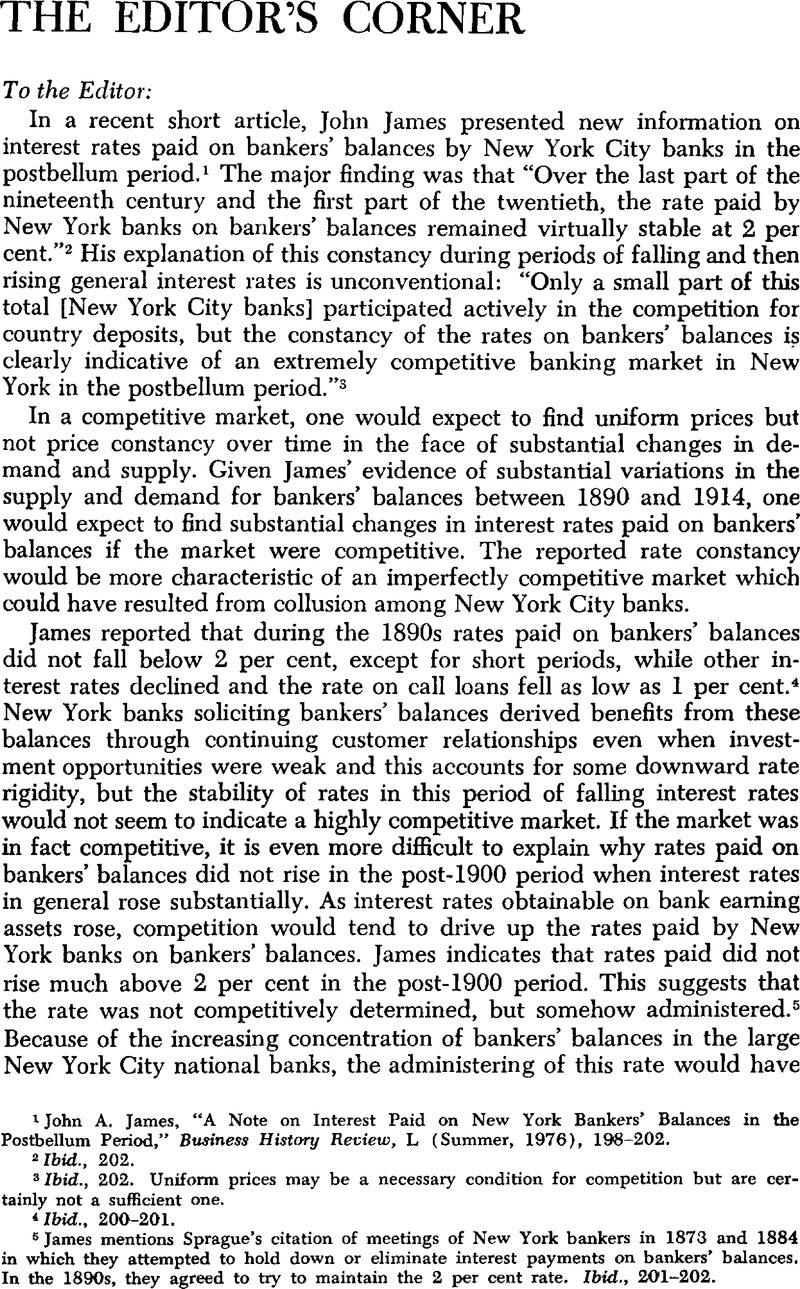No CrossRef data available.
Published online by Cambridge University Press: 11 June 2012

1 James, John A., “A Note on Interest Paid on New York Bankers’ Balances in the Postbellum Period,” Business History Review, L (Summer, 1976), 198–202CrossRefGoogle Scholar.
2 Ibid., 202.
3 Ibid., 202. Uniform prices may be a necessary condition for competition but are certainly not a sufficient one.
4 Ibid., 200-201.
5 James mentions Sprague's citation of meetings of New York bankers in 1873 and 1884 in which they attempted to hold down or eliminate interest payments on bankers’ balances. In the 1890s, they agreed to try to maintain the 2 per cent rate. Ibid., 201-202.
6 There are various places that this information is available. One such source is Myers, Margaret G., The New York Money Market, Vol. I (New York, 1931), 242–250.Google Scholar
7 Margaret Myers reported that by 1891 most New York City banks had substituted the direct payment of interest on bankers’ balances for the rendering of free services. [Myers The New York Money Market, 249.] Watkins indicates that there is evidence that the value of the free services was substantially less than the 2 per cent interest the balances could earn. [Watkins, Banker's Balances, 213.]
8 Sprague points out that the central reserve city banks of Chicago and St. Louis maintained large balances in New York City national banks, and during the 1907 panic drew down their balances like many other country and city banks.
9 Myers, The New York Money Market, 267-268; Watkins, Leonard L., Banker's Balances (Chicago, 1929) 153 and 209-210.Google Scholar
10 Watkins, Banker's Balances, 153.
11 James, John A., “A Note on Interest Paid on New York Bankers’ Balances in the Postbellum Period,” Business History Review, L (Summer, 1976), 198–202CrossRefGoogle Scholar.
12 Ibid., 201.
13 One result of such an arrangement is that the fluctuations of rates in the call market may have been exacerbated. For example, when interest rates were low, the stable rate paid on bankers’ balances became relatively more attractive. As a result, the supply of bankers’ balances and hence the supply of lendable funds on the call market increased, driving call rates lower than they would have been otherwise.
14 Redlich, Fritz, The Molding of American Banking, Men and Ideas (New York, 1968), 177Google Scholar.